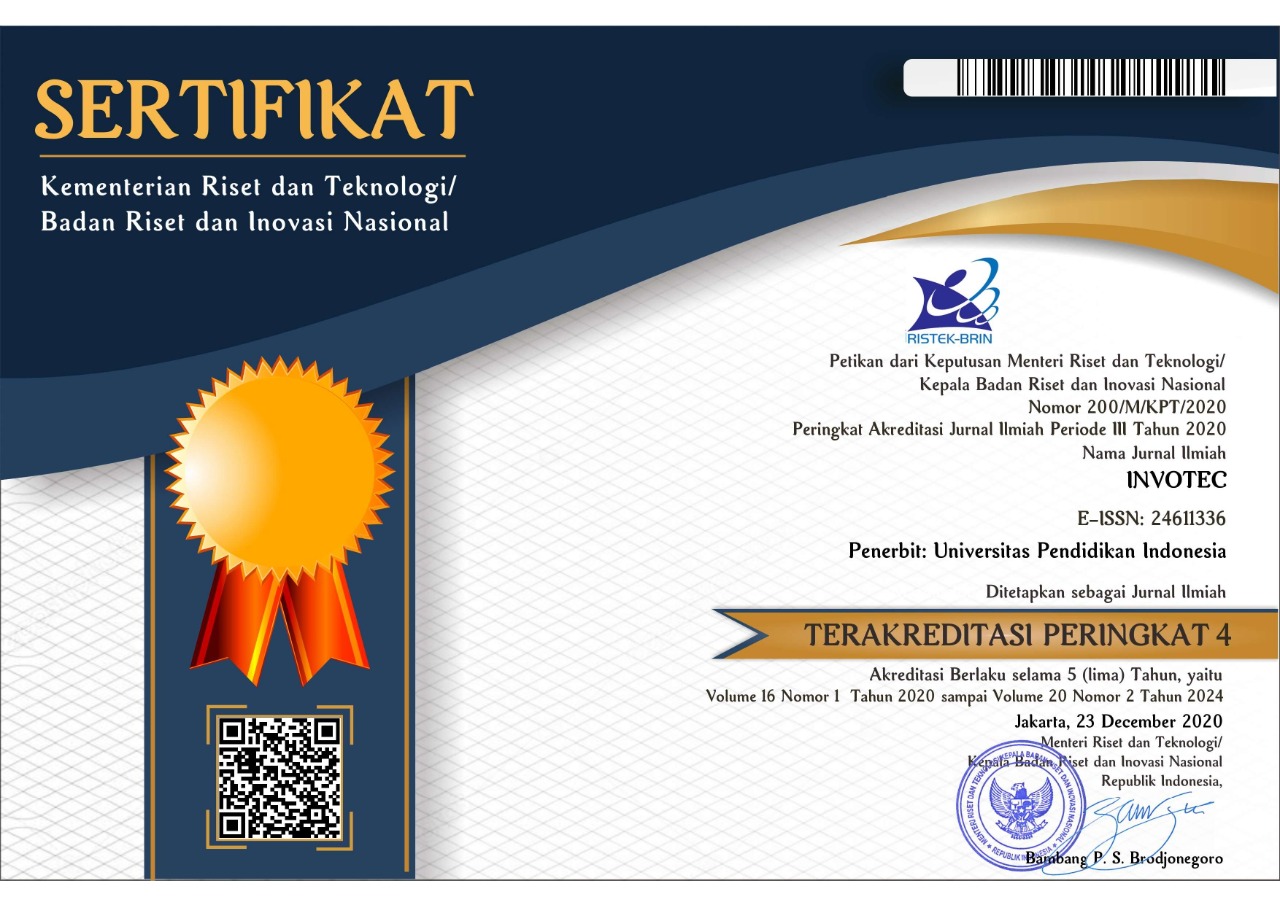Membangun Citra Pendidikan Kejuruan: Manfaat dan Implikasinya Bagi Perbaikan Kualitas Output dan Outcome
Abstract
Full Text:
PDFReferences
Anonymous (2005). A-levels are not the only route. ProQuest Education Journal Education and Training, 47, 6/7 pg. 460. Diambil tanggal 18 Agustus 2008 dari http://www.proquest.com/ pqdweb.
Bishop, J. H. (1989). Making vocational education more effective for at-risk youth [Electronic version]. Vocational Education Journal, 64(4), 14-19. Diambil pada tanggal 9 Agustus 2008 dari http://digitalcommons.ilr.cornell.edu.
Catri, D. B. (1998). Vocational education's image for the 21st Century. Eric educational report. Diambil pada tanggal 18 Agustus 2008 dari. http://findarticles.com org/1999-2/21st.htm.
Harris, R., Simons, M., & Moore, J. (2005). A huge learning curve TAFE practitioners ways of working with private enterprises. Diambil 15 Mei 2008 dari http://www.ncver.edu.au.
Husaini Usman. (2000). Paradigma baru peran administrasi pendidikan dalam peningkatan kualitas sumberdaya manusia menuju indonesia baru. Pidato Pengukuhan Guru Besar UNY, 22 Juli 2000. Yogyakarta: Universitas Negeri Yogyakarta.
Hermawan Kertajaya. (2008). PDB is positioning, differentiation and brand. Diambil pada tanggal 2 Desember 2008 dari http://www.kompas.com/read/xml/ 2008/10/18/10113478/pdb.is.positioning.differentiation.and.brand.
Kotler, P. & Fox, K. F. (1985). Strategic marketing for educational institutions. Englewood Cliffs, NJ: Prentice-Hall, Inc.
Kotler, P. (2000). Marketing management, 10th edition. Upper Saddle River:Prentice Hall, Inc.
Nickels, G. W. (1984). Marketing communication and promotion”. Text and cases, 3rd edition. USA: John Willey and Sons.
Northous, P. W. (2007). Leadership theory and practice. foruth edition. Thousand Oaks: Sage Publication.
Paryono (2006). Perceived image of vocational and technical education and improvement initiative. diambil pada tanggal 8 Agustus 2008 dari http://www.voced.edu.au/td/tnc/92.220.
Pimpa, N. & Suwannapirom (2007). Thai students‟ choices of vocational education: marketing factors and reference groups . Education Reasearch for Policy Practice Journal. (7) (2) p.99-107.
Perkins, D. C. (1998). The Carl D. Perkins vocational and technical education act, Public Law 105-332. USA: US Department of Education. Diambil 18 Agustus 2008 dari http://www.ed.gov/offices/OVAE/CTE/perkins.htm.03-08.
Reinhartz, J. & Beach, D. M. (2004). Educational leadership changing school chancngingroles. Boston: Pearson.
Robbins, P. S. (1994).Teori Organisasi; Struktur, Desain & Aplikasi. Arcan.
Thomson, F. J. (1973). Foundation of vocational education. Social and philosophical concept. New Jersey: Englewood cliffs.
Undang-undang Republik Indonesia No 20 Tahun 2003 Tentang Sistem Pendidikan Nasional.
Wardiman, D. (1998). Pengembangan sumber daya manusia indonesai melalui sekolah menengah kejuruan. Jakarta: Jayakarta Agung Ofset.
DOI: https://doi.org/10.17509/invotec.v8i1.6106
Refbacks
- There are currently no refbacks.
Copyright (c) 2017 Innovation of Vocational Technology Education
This journal provides immediate open access to its content on the principle that making research freely available to the public supports a greater global exchange of knowledge.

This work is licensed under a Lisensi Creative Commons Atribusi-BerbagiSerupa 4.0 Internasional.


